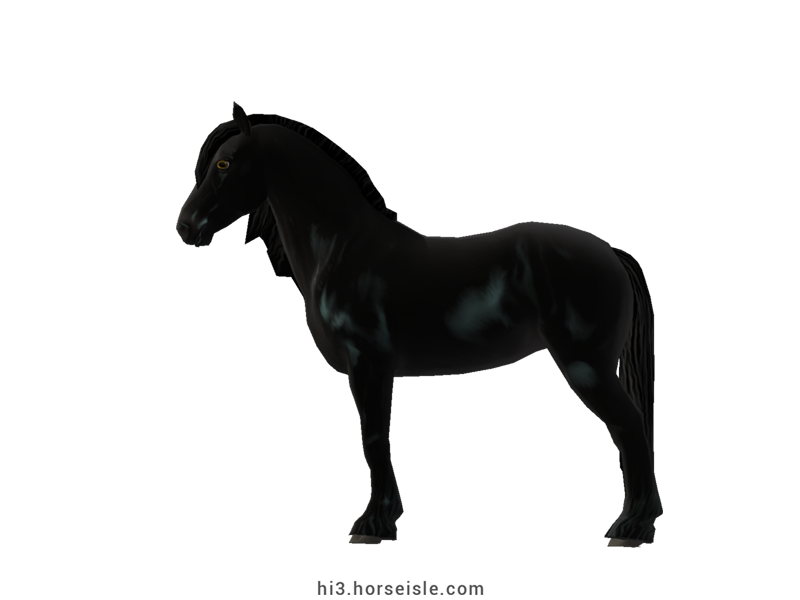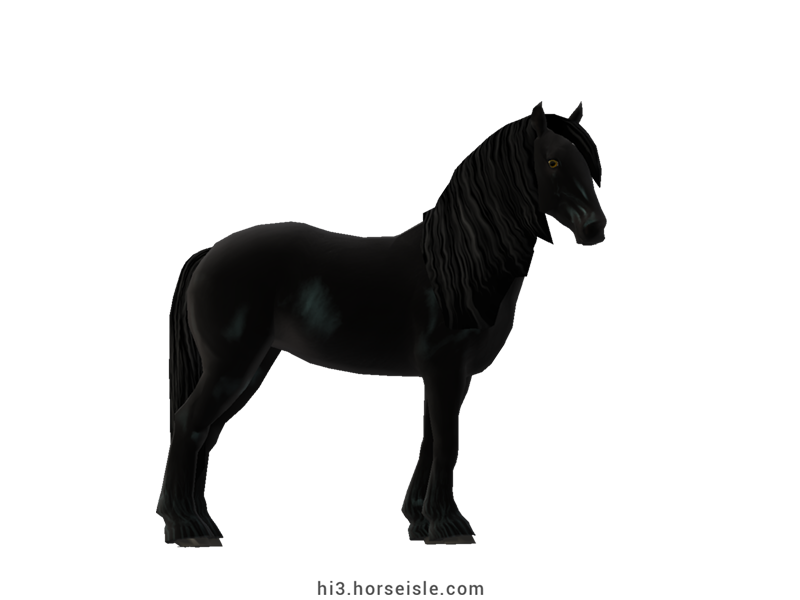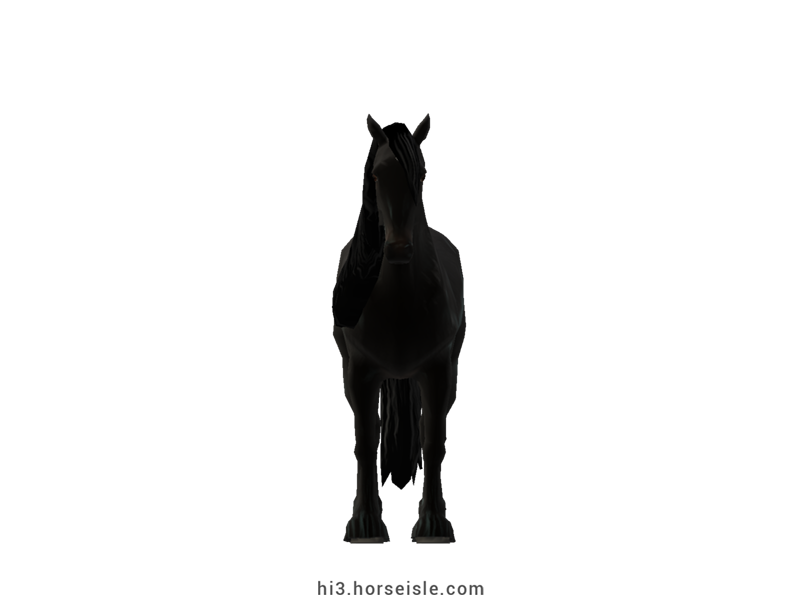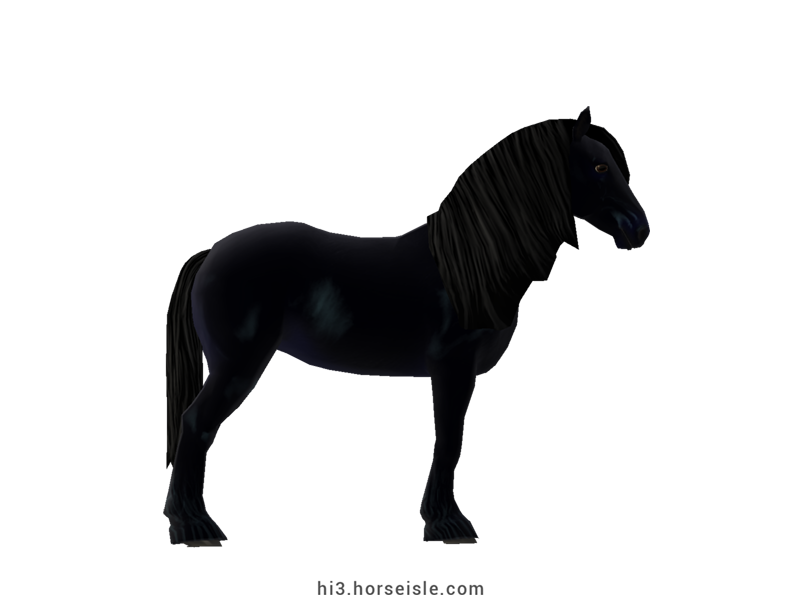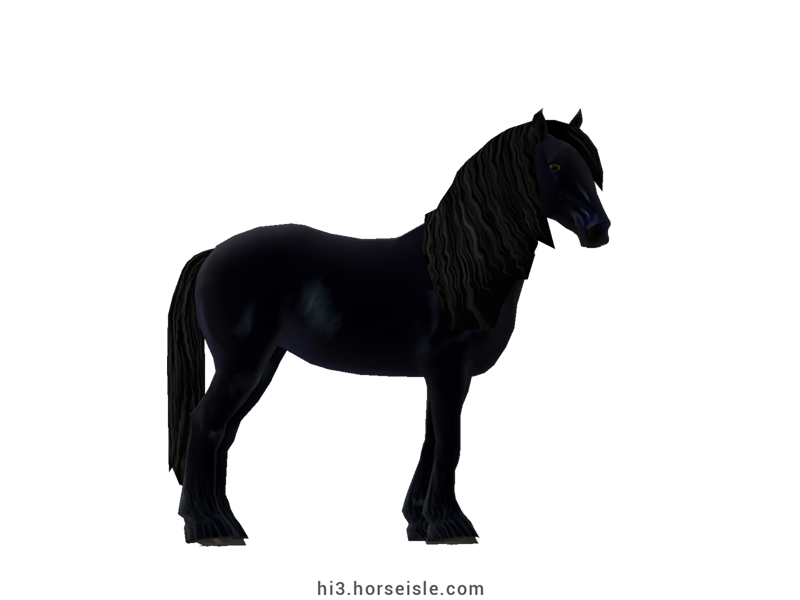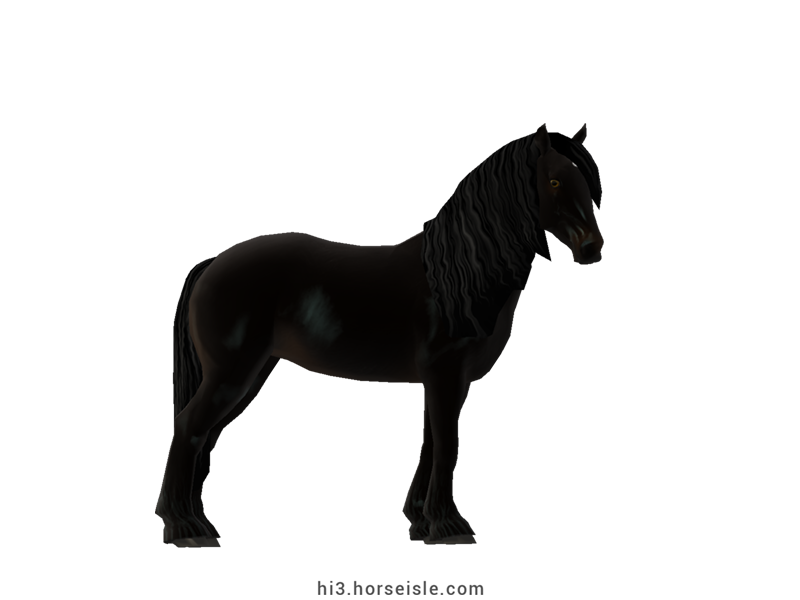Our Massive Real World Equine Reference!
[ INDEX ] Equine Type: Horse Breed: Friesian [ PREV ] [ NEXT ]
The fearsome war horse:
The Friesian is an ancient breed, tracing back to 150 A.D., when it was used by the Romans as a cavalry horse, a role that they continue to play long after the fall of the Roman Empire. Old illustrations from the 11th century still depict knights riding on Friesian horses to battle, and even in the 16th century Friesian horses were still commonly used as war horses.
From wars to carriage and dressage:
During the 17th century, war tactics changed and required lighter cavalries. The Friesian was considered too heavy for the task and was let go from cavalry duties. It quickly found a new life as a carriage horse of the highest quality and as a dressage horse in high schools for riding.
Friesians quickly became famous for their light and flowing trotting gait, so much so that they were crossed with other breeds to either improve those breeds' trotting ability or to create new breeds altogether, such as the Orlov Trotter. This practice carried on well into the 18th century.
From thousands... to three:
Alas, the popularity of Friesians declined during the 18th and 19th centuries, and consequently so did their dispersion. From a breed that was found all across Europe, their population became restricted to the Dutch province of Friesland, where they were used for pleasure-riding and trotting competitions.
By the end of the 19th century, Friesians were incorporated into farm work. Unfortunately, they proved to be too weak for this type of work, and farmers decided to give up on their Friesians and use heavier horses instead. The lack of breeding of Friesian horses caused their population to dwindle, to such an extent that by 1913 there were only three Friesians left.
Becoming the famous horse from Friesland:
Luckily, several breeders from Friesland decided to save the breed. They bred their Friesians to be smaller and less agile but of greater strength, a perfect combination of traits for farm horses at Friesland, and soon, people started to breed them. At last, the future of the Friesian horse seemed promising, but it wasn't long until another disaster struck.
During the 1960s, mechanization was introduced into farms, leaving the Friesian horses redundant. Most farmers couldn't afford to keep their horses just for riding purposes, and the population of the Friesians dwindled again. By 1965, only 500 registered Friesian mares were left.
Fortunately, economic growth during the late 1960s led to a new interest in the Friesian as a pleasure horse. Starting from 1967, several campaigns were launched to promote the usage of Friesians as riding horses. The popularity of the Friesian soared, and from being on the brink of extinction this breed became famous worldwide.
The Friesian today:
Today, the Friesian is one of the most famous breeds around the globe, but especially in Europe and the USA where they roam in their thousands. They are bred for their agile gaits and majestic appearance that became this breed's unique hallmark.
Friesians horses serve as all-around horses for both recreational driving and recreational riding, especially for recreational dressage. Friesians horses are often seen in films, be it for 'regular' roles or as stunt horses.
Conformation:
Friesians are famous for their iconic conformation that is often described as noble and majestic. Whether they are bred to have a lighter conformation directed for dressage or a heavier conformation directed for harness classes, all Friesians share the following characteristics.
The head is light, with a straight or slightly dished profile, and large eyes. The muzzle is rounded and has large nostrils. The ears are small and curved inwards. The neck is long and arched, ranging from relatively slender--as seen in Friesians bred for dressage or in-hand shows--to thick--as seen in Friesians bred for harness--although in both cases their neck is held up high.
The croup is long and sloping, slightly lower than the withers, thus giving a subtle uphill frame. The legs are sturdy and the hooves are wide. The hind legs are often stretched slightly behind the body.
Glorious manes and tails:
In addition to their iconic conformation, Friesians are also famous for their long. flowing, manes and tails that can reach the ground. The hair is usually wavy, although in some cases the hair can be straight rather than wavy.
The legs have feathering that ranges from medium to thick, although is it still lighter than the thick feathering seen among heavy draft breeds.
Performance metrics:
The following are the: range, average, (SD), and MOE of performance metrics of ordered Friesians in Horse Isle (not bred ones). In rare cases,
Speed: 14.5-16.2, 15.4 (0.3), 0.06.
Sprint: 45-57, 52 (2), 0.48.
Accel: 0.90-1.07, 1.00 (0.04), 0.01.
Decel: 0.94-1.08, 1.01 (0.04), 0.01.
Jump: 5.00-5.27, 5.15 (0.06), 0.01.
Pull: 2.51-3.41, 2.89 (0.17), 0.03.
Turning: 51.74-64.67, 58.33 (2.68), 0.53.
Reverse: 2.4-3.1, 2.8 (0.1), 0.03.
Stamina: 47.95-54.05, 51.21 (1.31), 0.26.
Reaction: 0.74-0.83, 0.79 (0.02), 0.00.
Chestnut Friesians?
Although Friesians are famous for 'always coming in black,' there are actually a couple of purebred chestnut Friesians out there. Their situation is tricky because while they are eligible for identification papers (stating that they are purebred Friesians,) they are not eligible as breeding stock.
That's why the Fire Friesian Book was created, and why chestnut Friesians in Horse Isle are registered as Fire Friesians. See the 'Fire Friesian' for more info.
Coats & Height:
Color & patterns: always black, with no markings at all except for an occasional small star. The coat is always solid and can be sooty.
* no brindle.
No chestnut? see the Fire Friesian for information about chestnut Friesians.
Height: 14.3hh and 17.1hh, although most Friesians stand between 15 and 16 hands.
[ INDEX ] [ PREV ] [ NEXT ]

